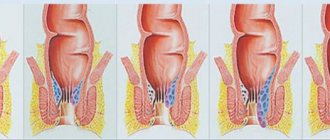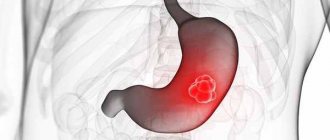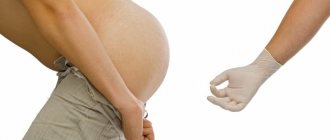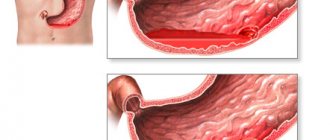Category: Surgical treatment Published 01/18/2018 · Comments: · Reading time: 8 min · Views: Post Views: 42,966
How surgery to remove hemorrhoids is performed depends on the method used. Today, several minimally invasive techniques are used, surgical ones, and both are called operations. The feasibility of a particular method is determined by the doctor, and specialists also try their best to avoid surgical intervention. Drug therapy is prescribed. In case of ineffectiveness, surgical intervention is performed.
Indications
The operation is not performed at the first stage of hemorrhoids. In this case, the pathology responds well to treatment with medications, folk remedies, exercise and diet. Starting from the second stage, minimally invasive procedures are performed. And only in the last stages is radical surgery indicated.
Indications for surgery are:
- prolapse of enlarged hemorrhoids even at rest;
- frequent bleeding of varying intensity is observed;
- the nodes tend to increase, medications do not help stop the process;
- there is a tendency to thrombosis, complications of hemorrhoids;
- due to the disease, the patient’s quality of life significantly deteriorates and severe pain is felt;
- previous methods of therapy are ineffective;
- advanced stage of hemorrhoids.
In case of severe bleeding, it is initially stopped, then the procedure is started. If it is possible to wait a while, the patient is prescribed medications to prevent severe bleeding, and only then the hemorrhoids are removed.
Indications for surgery for hemorrhoids
Surgical therapy is provided in a number of clinical cases:
- Stage II-III hemorrhoids.
- Lack of results after more than three months of intensive drug treatment.
- For prolapse of hemorrhoids, without spontaneous reduction.
- In case of symptoms of an abscess, rectal fistula, bleeding from hemorrhoids.
- When blood clots form in hemorrhoids, which can lead to thromboembolism. The thrombus breaks away from the node and enters the bloodstream. Over time, the clot blocks the lumen of one of the blood vessels, causing necrosis of the surrounding tissue.
- In case of combined pathologies of the rectum - anal fissures, polyps, chronic inflammation of the perirectal tissue.
Contraindications
The operation is not performed on elderly patients due to the long recovery period and the presence of various types of chronic diseases. The operation should be performed with caution if there is simultaneous inflammation of the large and small intestines.
Other contraindications:
- the presence of fistulas localized in the lower intestine;
- infectious intestinal diseases;
- oncological processes in the colon;
- diseases of the respiratory and cardiac systems;
- problems with blood clotting;
- pregnancy.
The intervention can be delayed until the person treats other chronic diseases, the general condition normalizes, and the woman gives birth.
With minimally invasive methods, the number of contraindications is minimal. Since the operation does not involve excision of tissue, there is no bleeding, the recovery period is short, and the likelihood of complications is lower.
Criteria for choosing anesthesia
When choosing an anesthesia method, anesthesiologists pay attention to the following series of examinations, which help determine which type of anesthesia is best for a particular patient.
After examining the patient, doctors determine the type of anesthesia for the operation.
The list of diagnostic examinations is presented in the table:
| Study title | What can the results indicate? |
| General blood analysis | An increase in the level of leukocytes may indicate to the doctor that there is an inflammatory process in the patient’s body. In some cases, the operation is postponed until the indicators normalize. A decrease in the amount of hemoglobin and red blood cells indicates the presence of anemia. If the hemoglobin level is below 90 g/l, correction of anemia is necessary before surgical treatment. |
| Blood chemistry. Indicators: bilirubin, cholesterol, transaminases, creatinine, urea. | Using this method, you can learn about the performance of the kidneys and liver, because many drugs used in anesthesia are eliminated by these organs. |
| Electrocardiography | Using this method, you can learn about the performance of the kidneys and liver, because many drugs used in anesthesia are eliminated by these organs. |
| Colonoscopy | Using this method, the doctor determines the condition of the intestines, as well as the volume and duration of the operation. If its duration is more than 2 hours, only general anesthesia can be used. |
| Coagulogram | If blood clotting is impaired, spinal or epidural anesthesia cannot be performed. The doctor is especially interested in prothrombin (normal 78-142%), platelets (normal 150-300 thousand/µl), fibrinogen (normal 2-4 g/l). If the level of these indicators is lower, there is a risk of bleeding during surgery, and if the level is elevated, there is a risk of blood clots. |
The list of examinations may expand depending on whether the patient has chronic diseases, previous operations, or congenital malformations. The factors influencing the choice of one type of anesthesia or another are discussed in more detail below.
Types of radical surgery
The operation is performed if other methods fail to provide a therapeutic effect. Currently, several techniques are used to remove hemorrhoids.
Hemorrhoidectomy using the Milligan-Morgan method
The classic operation has been used since 1937. Experts are constantly improving the technique and changing it somewhat, so several variations have arisen.
- The initial version of the operation is open hemorrhoidectomy. During surgery, the inflamed node and adjacent tissues involved in the pathological process are removed. The wound is not sutured; it is left to heal naturally. The patient is hospitalized, the condition of the wound is monitored, and the healing process is monitored. At the same time, medications are prescribed to prevent inflammation, infection, and pain relief.
- Closed hemorrhoidectomy has been practiced since 1950 of the last century. It differs from the previous version in the ending. The wound is sutured after removal of the node. The procedure is performed on an outpatient basis, the patient goes home a few hours after the anesthesia wears off.
- Submucosal hemorrhoidectomy requires special care and highly qualified surgeons. During the operation, only the pathological node is removed, the mucous membrane is not disturbed. The recovery period is significantly reduced, and patients tolerate the intervention more easily.
The main advantage of the procedure is to instantly relieve a person from the source of painful symptoms.
But there are significant negative aspects, since the operation is extremely complex:
- the duration of the operation is more than 1 hour;
- carried out under general anesthesia;
- in the process, a person loses a large amount of blood;
- recovery period from 1 month to six months;
- the risk of complications increases;
- During the first time after surgery, severe pain is felt.
People who have suffered from hemorrhoids for a long time are ready to take risks and undergo complex rehabilitation. The Melligan-Morgan method gives a chance for recovery.
Hemorrhoidopexy using the Longo method
It was founded by an Italian proctologist in 1993. The procedure is used much more often and is gradually replacing classical surgery. The intervention requires less time, the percentage of complications is lower, and the recovery period is shorter.
During the procedure, the mucous membrane around the hemorrhoid is excised, and the neoplasm is pulled up using titanium clips. Due to this, the blood flow to the nodule is disrupted; over time, it dries out, dies, and disappears.
Benefits of the procedure:
- performed under local anesthesia;
- An experienced surgeon needs only 15 minutes to complete;
- the mucous membrane where there are no nerve endings is excised, pain is prevented;
- the patient loses minimal blood;
- the operation is performed on elderly people, pregnant women in special situations, breastfeeding women, and those with chronic diseases;
- short recovery period - about 3 weeks for complete recovery.
Disadvantages include high cost and inability to treat external hemorrhoids.
Preparatory and operational period
Before the operation, the patient must fulfill certain conditions, namely: pass all the necessary tests, undergo a diagnosis of concomitant pathologies, and undergo a consultation with a therapist to determine possible contraindications.
The preparatory stage consists of complete bowel movement. Cleansing is carried out on the eve of the operation and immediately before the procedure itself.
A similar procedure is carried out using an enema and laxative medications. It is also worth paying special attention to nutrition in order to normalize all functions of the intestine and its walls. It is necessary to restore normal stool. This is a mandatory condition, since constipation during removal of hemorrhoids can cause serious complications. Let us remember that constant constipation is the first step to the development of hemorrhoids.
Before surgery, it is very important to relieve the inflammatory process in the anus, if it is present, of course. It is also worth relieving irritation and swelling. This can be done with the help of medications and traditional medicine.
Postoperative period
After a classic operation, the patient remains in the hospital for some time; with the Longo method, the patient is sent home immediately. Experts give recommendations to speed up the recovery process.
- On the first day you are not allowed to eat to avoid the formation of feces. It is recommended to drink more. From the second day the patient is on a strict diet. Proper nutrition is the key to quick recovery and no relapses. For a month, you need to strictly monitor your intestinal function and avoid constipation and diarrhea.
- Alcoholic drinks are strictly prohibited. They are not recommended for use by patients who have undergone surgery to remove hemorrhoids. Otherwise, a relapse develops.
- You should drink more. The liquid softens stool, improves the process of defecation, and normalizes intestinal function. However, it is not allowed to drink coffee, strong tea, beer, kvass, or carbonated drinks. Dried fruit compote, fruit juice, green tea, decoctions of medicinal herbs, and still mineral water are recommended.
- During the first time after surgery, painful sensations of varying intensity occur. To relieve pain, anesthetics are prescribed in the form of tablets and rectal suppositories. You can drink Nise, Combispasm, Ketanov, Ketalong, Pentalgin. For severe pain, an injection of Diclofenac or Dicloberl is given.
- Ointments, creams, suppositories speed up the recovery process. Levomekol, Heparin ointment, Proctosedyl, Anuzol, Relief, etc. are prescribed. It is also recommended to take anti-inflammatory and antimicrobial agents.
- At the same time, traditional medicine methods are used. Wash with a weak solution of potassium permanganate. They make sitz baths with it if the process of defecation is difficult. Lubricate the anus with calendula and sea buckthorn oils, make lotions from grated raw potatoes, etc. All methods must be agreed upon and discussed with a doctor.
- It is necessary to strictly adhere to the rules of intimate hygiene. Carry out washing in the morning, in the evening, every time after defecation. Use high-quality soft toilet paper or wet wipes.
If the recommendations are not followed, the recovery period is prolonged and relapses are possible.
Use of regional anesthesia
Regional methods include spinal and epidural anesthesia. This method of pain relief is most often used when removing hemorrhoids. In the absence of complications, the duration of the operation does not exceed 30-40 minutes and you can get by with regional anesthesia, while avoiding general anesthesia, which is harmful to the body.
Regional anesthesia is used for operations lasting 30-40 minutes
When removing hemorrhoids, there is not much difference whether you use spinal or epidural anesthesia. Often its choice is determined by the availability of equipment in the hospital and the necessary skills of the anesthesiologist.
But although these methods are similar, they still have their own characteristics and differences.
During spinal anesthesia, a needle is inserted into the spinal canal at the level of the second or third lumbar vertebrae. An anesthetic is supplied through it, which blocks sensitivity and motor ability below the level of administration, that is, the pelvic organs and lower extremities. The drug begins to act within 5 minutes.
With epidural anesthesia, the anesthetic is not injected into the spinal canal itself, but into the epidural space of the spinal cord, and numbs the nerve roots that pass through it. When removing hemorrhoids, it can be difficult to determine the injection site, but for an experienced anesthesiologist, this is usually not a problem. The drugs begin to act only 20-30 minutes after their administration.
Both methods use the same anesthetics:
- Lidocaine.
- Tetracaine, with or without adrenaline.
- Bupivacaine.
It is possible to introduce additional drugs:
- Fentanyl has a sedative effect on the patient, slightly depressing his consciousness.
- Clonidine - prolongs the action of anesthetics.
- Adrenaline – increases arterial and intracranial pressure, improves the effect of anesthetics.
Absolute contraindications to regional anesthesia are:
- Heart rhythm disturbance.
- Blood clotting disorder (coagulopathy).
- Purulent or viral infections on the skin at the site where the injection is to be given.
- Severe curvature of the spine (especially relevant for spinal anesthesia).
Removing hemorrhoids is a serious surgical procedure that requires adequate anesthesia and anesthesia. The choice of anesthesia method lies on the shoulders of the anesthesiologist, who, after studying the results of the patient’s examination, decides whether to perform regional or general anesthesia.
Source of the article: https://narkozzz.ru/operatcii/anestezija-pri-udalenii-gemorroja.html
Complications after surgery
Side effects are more common after hemorrhoidectomy. Sometimes the situation requires repeated intervention, but for a different reason.
- Heavy bleeding. The presence of blood at the first bowel movement is normal, but if the bleeding stops quickly it does not cause severe pain. Copious bleeding in other situations indicates low qualifications of the specialist. There may be divergence of sutures, incomplete cauterization of veins and capillaries.
- Urinary retention . More often observed in men. The way out of this situation is to use a catheter. You have to turn to specialists for help.
- Psychogenic constipation . Against the background of fears of pain, constipation develops. The person is afraid of the process of defecation, the muscles cannot relax. In this case, it is recommended to take sedatives in the form of Valerian, Motherwort, take a tablet of Drotaverine, Papaverine or No-shpa, and take a warm bath. If these measures do not help, the intestines are cleansed with an enema.
- Prolapse of the rectal mucosa. If during surgery the surgeon damages muscles or touches nerve endings, rectal prolapse may occur. Surgery is required to correct the defect.
- Narrowing of the rectal canal . It also arises due to the low qualifications of the specialist. They expand with instruments or perform plastic surgery.
- Fistulas. Pathological neoplasms that connect the rectal mucosa with neighboring organs.
- Formation of pus . Indicates the penetration of pathogenic microorganisms into the wounds. The situation requires treatment with antibacterial drugs.
Complications more often occur when the specialist is poorly qualified and the patient does not comply with the surgeon’s instructions.
Preoperative diagnosis
Here is a list of mandatory laboratory tests performed before radical hemorrhoid surgery:
- general clinical blood test;
- general clinical examination of urine;
- biochemical blood test, including determination of sugar levels;
- coagulogram (detects blood clotting disorders);
- determination of blood group and Rh factor;
- Wasserman test (detects antibodies to the causative agent of syphilis);
- ECG;
- fluorographic examination of the chest organs;
All patients undergo the following proctological examinations:
- digital revision of the anus;
- examination of the anus with an anoscope;
- sigmoidoscopy (if necessary, fibrocolonoscopy).
Also, the patient may be prescribed the following instrumental diagnostic methods before surgery:
- ultrasound examination of the abdominal organs;
- CT scan;
- magnetic resonance imaging, etc.
The above-described diagnostic complex is necessary to clarify the diagnosis and determine the performance of vital organs and systems. If necessary, the patient can be referred for consultation to a specialist (cardiologist, pulmonologist, endocrinologist, hematologist, etc.).
Cost of the operation
Removal of a hemorrhoid using the Milligan-Morgan method in Russian clinics from 3 thousand rubles. up to 100 thousand rubles. Additionally, you will have to pay for preliminary and subsequent consultation with a specialist. Services cost around 1,500 rubles.
You should also take into account preparatory drug therapy, which will simplify the operation and reduce the risk of side effects - about 5 thousand rubles. The cost differs at each clinic. The exact price of services can be found in the price list on the official website of the institution. The cost of surgery using the Longo method is from 30 thousand rubles. up to 150 thousand rubles. The price of the operation may immediately include the entire list of services and medications.
Is it better to have surgery in Europe?
Undoubtedly, surgery to remove hemorrhoids is extremely difficult. The rehabilitation period and the absence of complications largely depend on the qualifications of specialists. There are a huge number of clinics offering expensive services in Russia. Not everyone has an impeccable reputation.
Patients with great financial wealth travel abroad. Of course, money can do everything. They will provide a room with European-quality renovation, a TV, and provide polite treatment and service. But all this is for money. Those who do not have them have to consider options in their own country. To calm your nerves, it is worth noting that we also have highly qualified surgeons, and the staff also smiles, but for less money. It is recommended that you initially collect more information about the clinic, read reviews, and check the reputation of the doctors. After all, your own health is at stake.
Important tips and rules for preparing for hemorrhoid removal
Before removing hemorrhoids, the patient must be examined. This is especially true for people who have chronic diseases. During the period of their exacerbation, no surgical interventions are performed. If any pathology is detected in the active phase, it is necessary to carry out a course of treatment so that the disease goes into stable remission.
It is important to exclude sluggish infectious processes and normalize cardiac and respiratory activity.
A week before surgery, bowel cleansing is required. For this purpose, a special diet, enemas, and laxatives are used. The doctor will tell you about this in detail at your appointment, and will also recommend the necessary medications for existing intestinal dysfunction.
7 days before surgery, you must begin to strictly adhere to your diet. On the eve of surgery it is recommended:
- last meal – 12 hours before surgery;
- before visiting the doctor, take a shower or bath, put on clean underwear;
- carry out cleansing enemas, following the recommendations, and, if necessary, take laxatives.
It is important to stop taking anticoagulants, antiplatelet agents, and NSAIDs a few days before surgery. For a positive psychological attitude, it is better not to read negative reviews from patients, but to trust the doctor.











